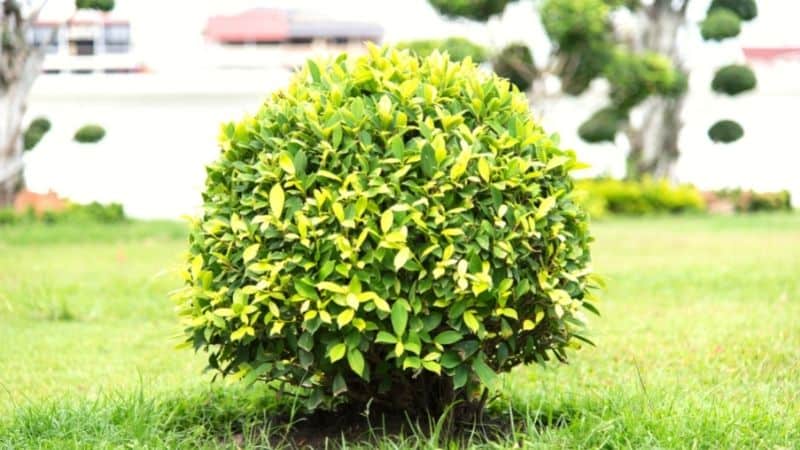Ficus Altissima is a plant that has been growing in popularity in recent years. This tree can be seen as decoration for homes and businesses alike or even provide shade on hot days.
Ficus plants are unique because they grow well in many different environments and conditions, making them suitable for just about any situation. For this reason, it’s essential to learn the basics about caring for your Ficus so you can keep it happy and healthy.
Ficus Altissima Care Guide Overview
- How To Plant (when & where)
- How To Grow (staking, watering, fertilizing, humidity, mulching)
- How To Trim And Prune
- How To Pot And Repot
- How To Propagate (when & how)
- And Pests and Diseases, Plant Species, Companions, Toxicity
Characteristics
- Common names: council tree, lofty fig
- Origin: Southeastern Asia, Islands in the Pacific
- Indoor or Outdoor plant: Outdoor plant. Grows well indoors in proper conditions
- Height and Structure: About 40ft tall when grown outside in ideal conditions, 6-8ft when grown indoors.
- Temperature: Ideally about 60 – 68º F (16 – 20 ºC)
How to Plant The Ficus Altissima

You have your Ficus plant, but now it’s time to find a good spot for it. Ficus altissima care is easy because they are quite resilient plants. However, it’s still important to know what you should be doing for your particular type of plant so that you can give it the best care. Ficus altissima can do well in full sun or part shade locations; the only thing you need to worry about is if too much shade will cause damage such as discoloration and stunted growth. It’s best to avoid areas that receive no sun at all.
Planting time
Ficus altissima planting should be done during the spring or fall when the weather is warm but not too hot or cold for your plant. You can start planting during summer or winter, but be aware that it will take a lot longer for your plant to develop fully. The best time of day to transplant is in the early morning after the sun has come out and warmed up the soil. However, avoid doing this on hot days as too much heat will cause stress for your Ficus altissima care routine.
Spacing
Planting your Ficus is important, but spacing it out properly is equally as vital. If you plant too close together, then the roots will end up competing with each other for nutrients and water, which can cause stress to both plants involved. Spacing between a few inches apart should be enough room so that roots have space to grow without impeding on their neighbor’s space.
Lighting
Ficus altissima can grow very tall, so make sure to give them enough space for their roots and branches to spread out to get proper sunlight exposure without being too cramped or exposed. Full sun is best for this type of plant because it helps the leaves become a more vibrant green color. However, some Ficus altissima varieties do well with part shade as long as they still receive at least four hours of daily sunlight exposure. If you place your plant near a window where the light directly shines on it, then you won’t need to put your plant outside on nice days unless you plan on moving it back inside after a while.
Soil
When it comes to the perfect soil, you’ll want to make sure that you have moist but not soggy, nutrient-rich soil for your plant’s roots. Use good quality garden soil or potting mix and avoid using heavy soils which will sit on top of your Ficus’ roots instead of properly nourishing them. After planting, give your plant good water to help settle the soil around it, and then be sure to keep that soil moist enough.
How to Grow The Ficus Altissima

Growth habits
When you plant your Ficus, it will take a little while before the roots spread to fill out the soil and begin growing new branches. During this time, continue to water regularly so that your Ficus altissima care routine is consistent even during the slow growth period. You can fertilize once or twice during early spring if you want to give your plant some extra nutrients for faster development but avoid doing so too much.
Staking
One of the most important Ficus altissima care tips is ensuring that your plant doesn’t get too tall and spindly. If this happens, you can stake part of it with a bamboo pole or other long object, which will keep it from bending over too much in one direction when there’s wind around. You don’t need to worry about staking if your plant only gets several feet tall because having multiple trunks helps even out any weight distribution issues on top.
Watering
Watering Ficus altissima is very straightforward because this type of plant needs water, but not too much. Water your plant at least once a week during its growing season (April – October) and less frequently in the winter months when growth slows down considerably. Ficus altissima plants are also relatively drought tolerant, which can make them ideal for periods without rain. However, you mustn’t let the soil stay dry too long, or else leaf drop will likely occur, and your tree may become stunted in growth. If there isn’t any drainage available, then be extra careful with how often you water.
Fertilizing
It would be best to fertilize your Ficus altissima with a balanced fertilizer at least once every two weeks during the growing season (from April until October) using half-strength ratios when feeding plants less than one year old. If you’re unsure what type of fertilizer is best for your particular variety, it’s better to ask before applying any so that you don’t risk harming your plant.
Humidity
Since Ficus altissima is a tropical plant, it thrives in humid conditions. If your home isn’t naturally moist enough, you can easily add humidity by placing the pot inside a saucer filled with pebbles and water or investing in a small humidifier to keep around your plants. If the humidity is too high, you may need to reduce it by opening windows or using a fan.
Mulching
Although you should be mulching for all of your plants, it’s vital for the Ficus altissima since it is sensitive to excess moisture. If water pools on top of the soil or around its roots, then there’s a good chance that root rot will develop and kill off some, if not most, of your plant. The mulch should be about three inches deep and kept away from the trunk itself to prevent mold or other diseases.
Trimming and Pruning
There are two types of pruning techniques when maintaining proper Ficus altissima care: hard prune and soft prune. Hard pruning means cutting off dead or damaged limbs from the plant, and soft pruning means trimming off smaller branches to keep the size of your Ficus in check. Both techniques can be done anytime during the year except for winter when it’s cold enough outside where you live or if there is a light frost that could damage your plants.
Pot and Repotting
It would be perfect to repot your plant once it reaches a height and width of about five feet. Growing conditions and size will vary for each tree, so repotting times will also vary. There’s no harm in waiting longer before repotting your Ficus altissima unless it begins to show signs of lack of space, such as crowding at its base, which can cause root damage.
Propagation
Propagation of Ficus altissima is by cuttings. Cuttings are taken from the new stem growth. These cuttings can be potted or kept in water to produce roots. If kept in water, the leaves must be removed from the cutting because they prevent air circulation and can cause the rotting of stem tips.
Divide and Transplant
The perfect time to divide or transplant your plant is in late winter when the tree has gone into a period of dormancy. You should also avoid dividing while it’s actively growing because that could cause severe damage and kill off portions of your Ficus altissima. The soil should be removed from the roots, and the plant potted in fresh potting mix. Ensure that there are sufficient holes to accommodate all of the roots without packing down too tightly. Replant your Ficus altissima into a larger container or move it up to its next size pot if necessary. Water your plant thoroughly after transplanting so that no air pockets remain trapped around its roots.
Pests and Diseases
If your plant becomes infested with pests, be sure to take care of them immediately before they become an even bigger issue. You’ll want to remove all affected leaves since pests are mostly found on the underside of leaves. If necessary, use commercially available organic sprays that will help protect your tree without causing damage. As far as diseases go, leaf drop is likely one of the most common problems you’ll come across with the Ficus altissima, especially if it’s growing indoors. This happens because the environment isn’t natural for the plant, which causes stress on its systems, weakening it over time.
Plant Species
The Ficus genus consists of around 800 different types, but the most common ones are the Ficus benjamina which is also known as weeping figs, rubber trees, or tropical ash, and Ficus microcarpa, otherwise known as Chinese banyan or Indian laurel fig.
Companions
The Ficus altissima can be found in the tropics, where it often grows as an epiphyte, meaning that it lives on other plants but doesn’t actually harm them. Other plants which are good companions for Ficus altissima include Maidenhair ferns (Adiantum) and Staghorn ferns (Platycerium bifurcatum).
Toxicity
The Ficus altissima is non-toxic to humans. However, if ingested, it can cause gastrointestinal irritation. The sap found in the leaves can also irritate your skin, so wear protective gloves when handling or pruning this tree. The Ficus Altissima can be toxic for cats and dogs on the skin or when ingested. If your cat ingests any part of this plant, including the sap, it may become sick with symptoms such as vomiting, excess salivation, or lack of appetite. The plant may also cause dehydration when ingested.
The Ficus altissima is an excellent indoor plant that is not difficult to care for as long as you follow the guide. If you maintain consistent care for your plant, it will thrive.


